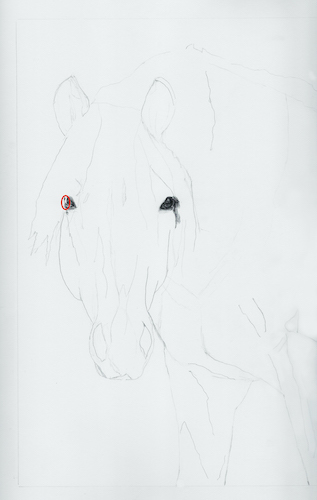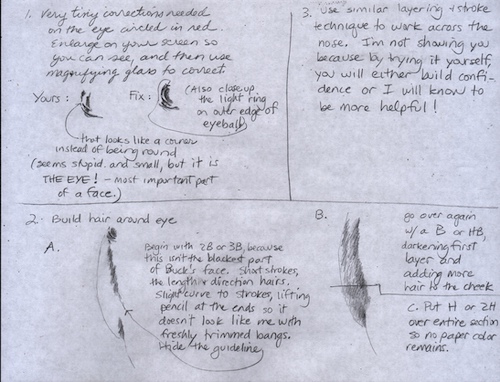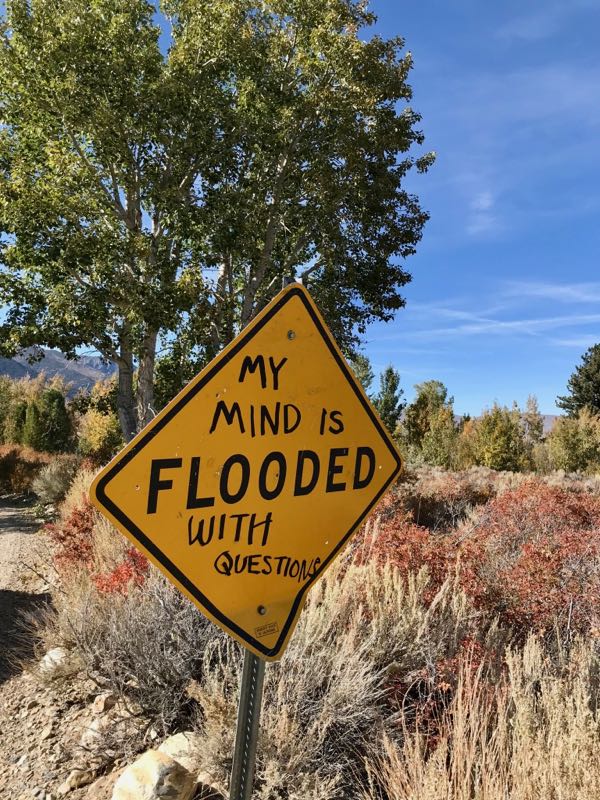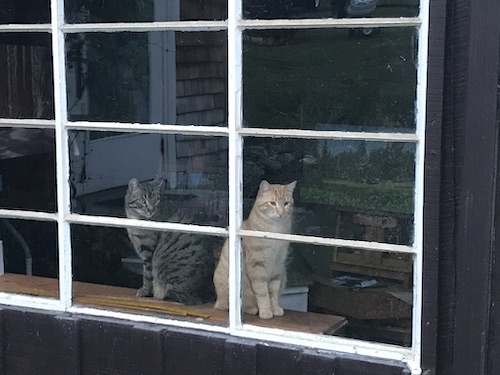As of this morning, Monday, September 13, 2021 the entire Mineral King Road is under mandatory evacuation. The Paradise Fire (part of the KNP Complex Fire) is the threat. If you are someone who prays, this would be a good time.
I am your Central California Artist AKA a Painting Machine. At least that is what it feels like when sales are good and there might be a show in the works. This would be a show at a gallery, a solo show, in the big room, not “gallery 2” or as an opening act to another artist. More will be revealed in the fullness of time. Or as Dad used to say, “Time will tell”.
This one has been collecting dust for awhile. Let’s git ‘er dun. Why not edit out the stump? Because that is a landmark that tells those in the know exactly where this is. (Just past the junction to Mosquito Lake on the Eagle/Mosquito Lakes trail. Or is it before the junction? Never mind, it is in the vicinity).
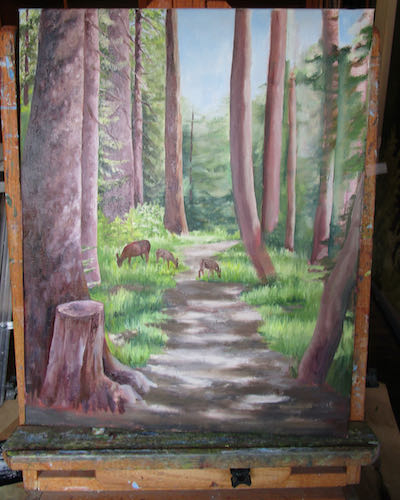


Never can have too many citrus scenes to suit me.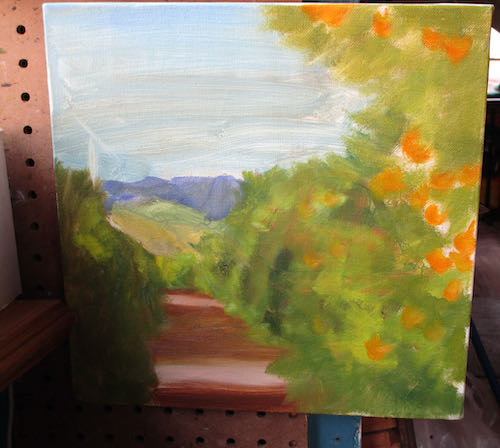
This one might be called “Looking East II”. (That is a Roman numeral two, not an eleven, which is what the 2 lines between my eyebrows resemble, which is why I have bangs.)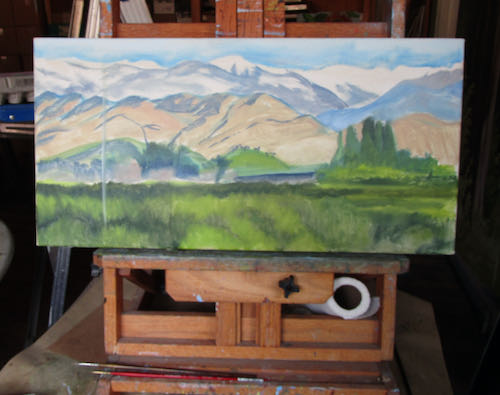
This is the view of Alta Peak that I get when I stand outside on the bench that surrounds my chimney. 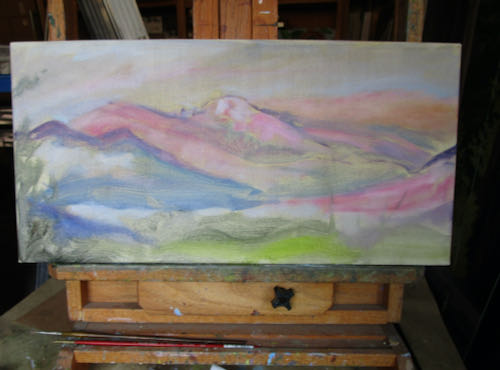
Yokohl Valley area is popular, and I have a good variety of photos with great color and light to choose from. This calls for a little bit trickinology, because the photo’s proportions are not the same as the canvas. But no one cares, and I am developing quite a bit of skill in the trickinology department.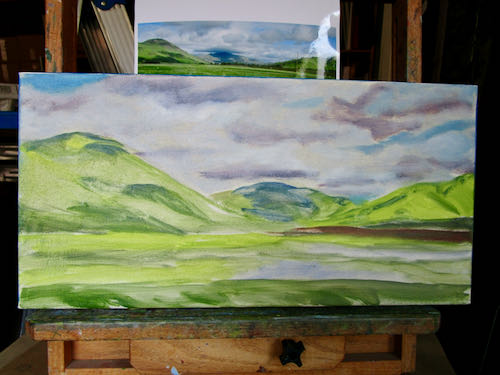
Now, I wonder if the show will come to fruition. Hard to say with the Plague still lurking.
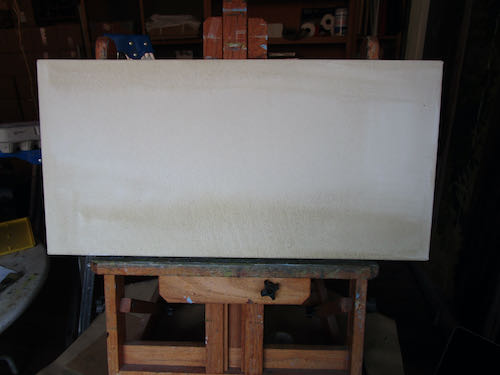
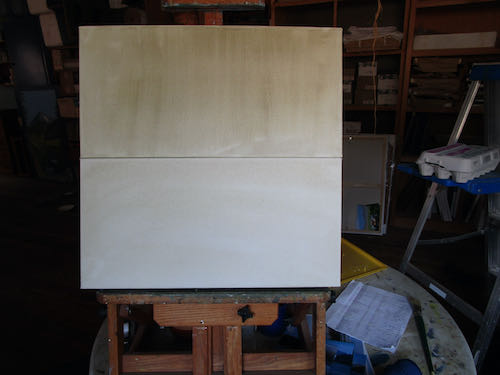

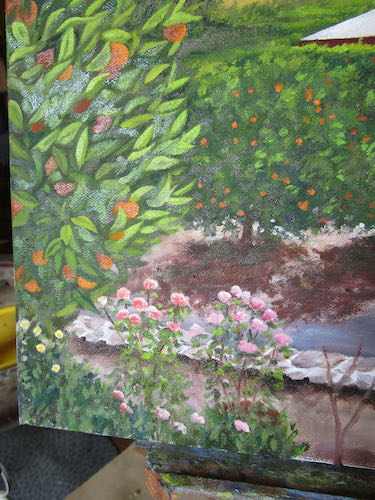
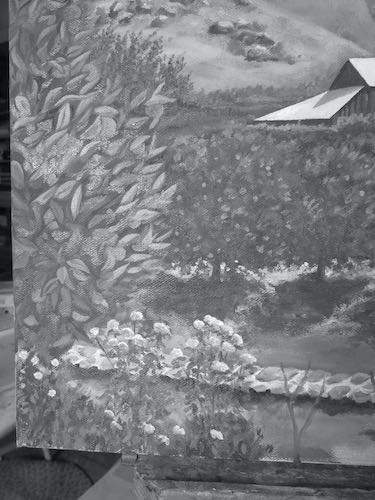
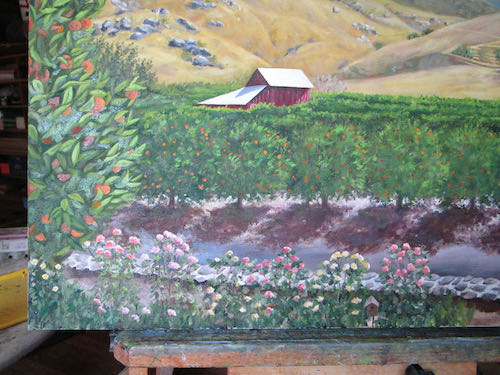
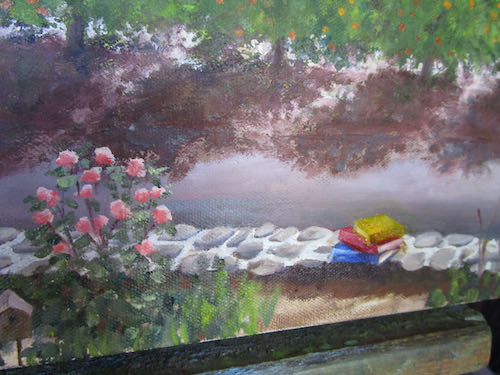
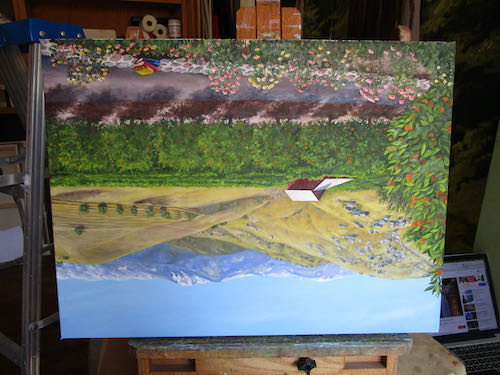
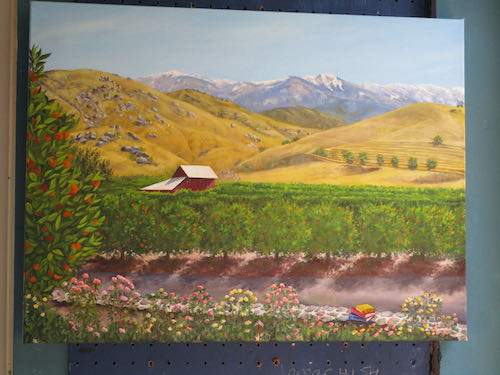
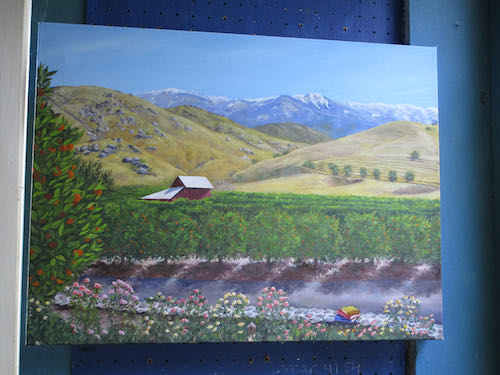
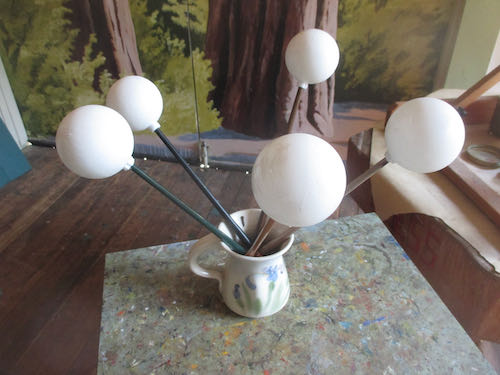
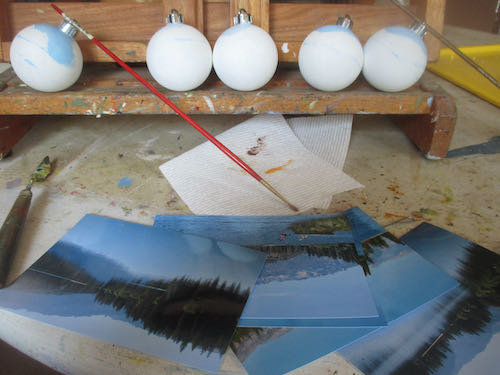
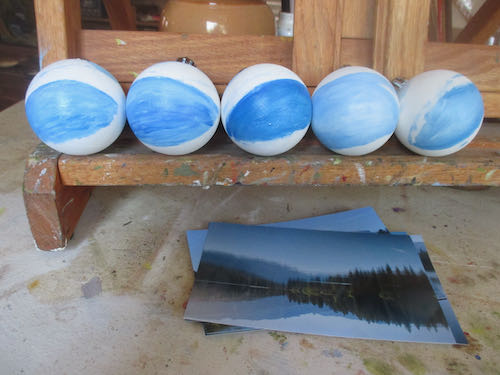
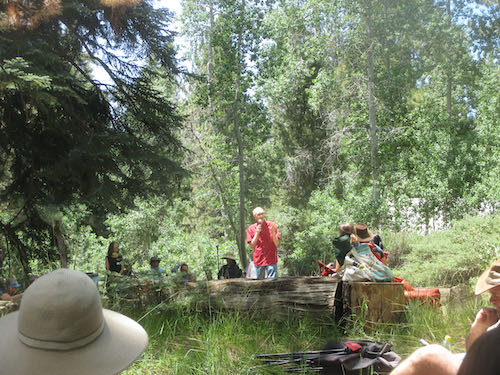
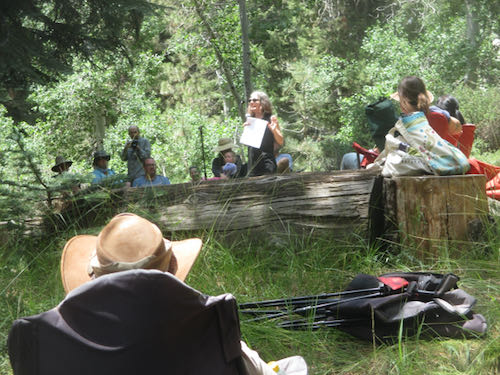
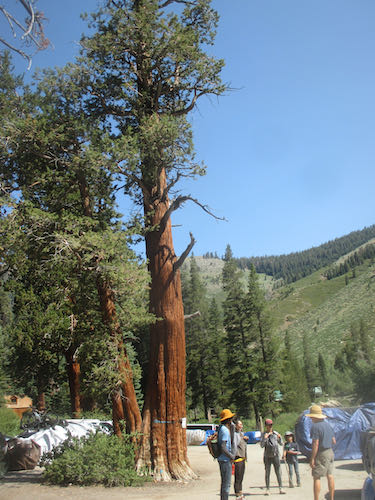
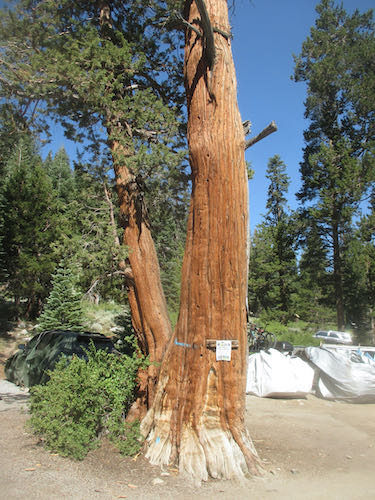
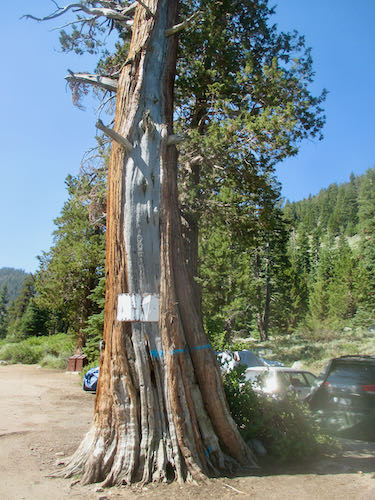
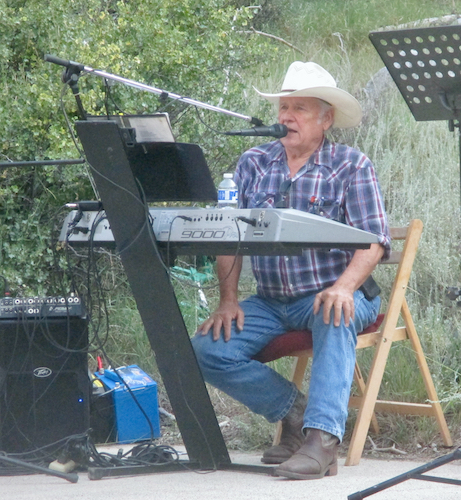
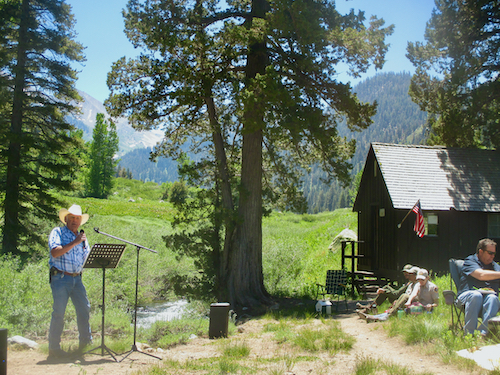
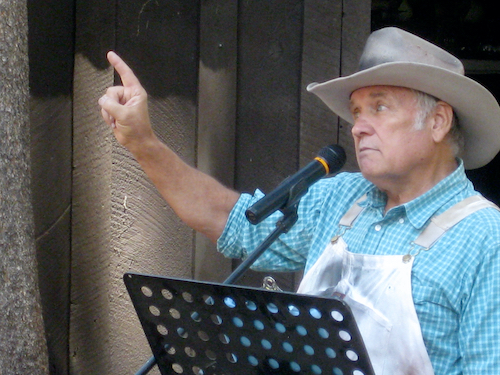
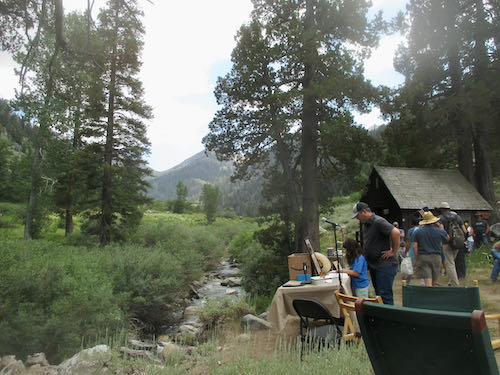
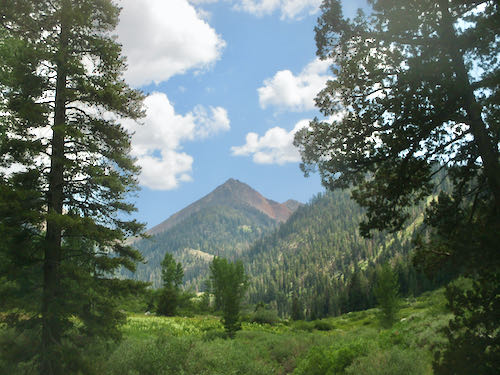
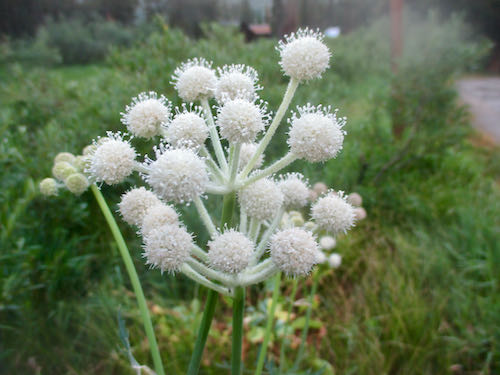
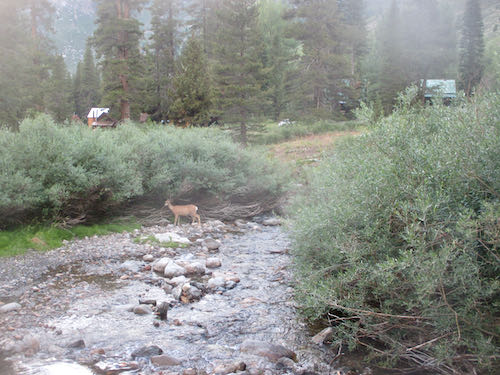
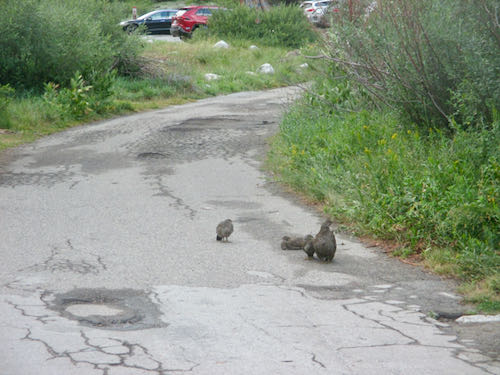
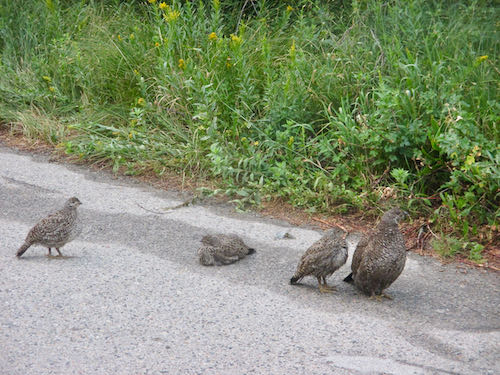
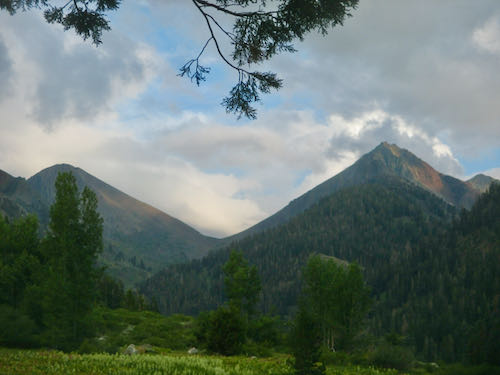
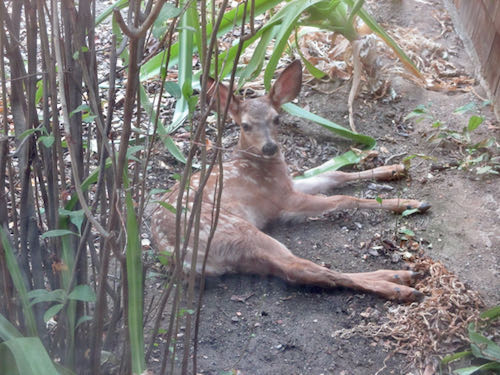

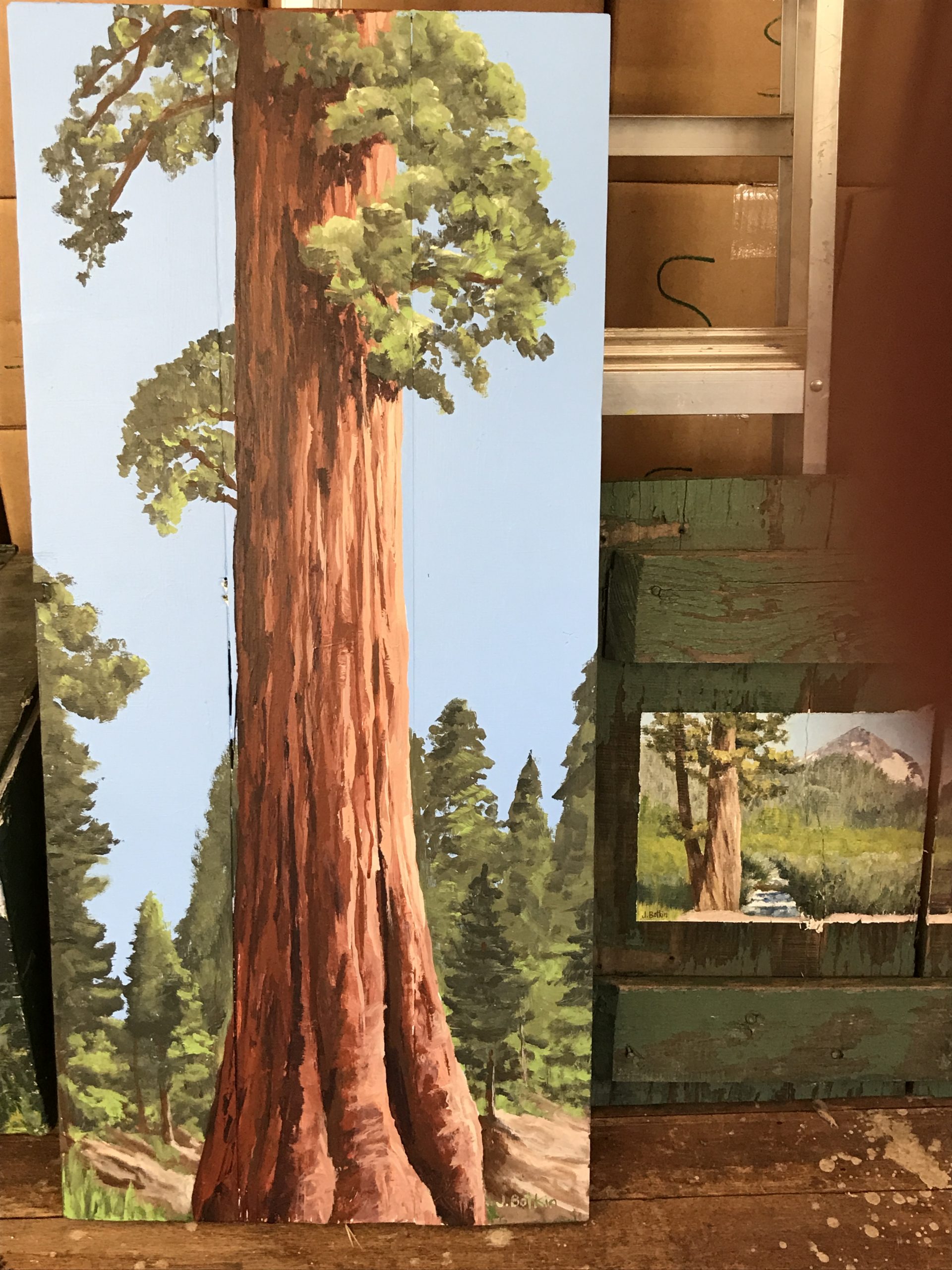
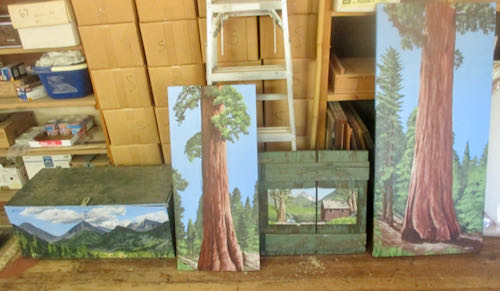
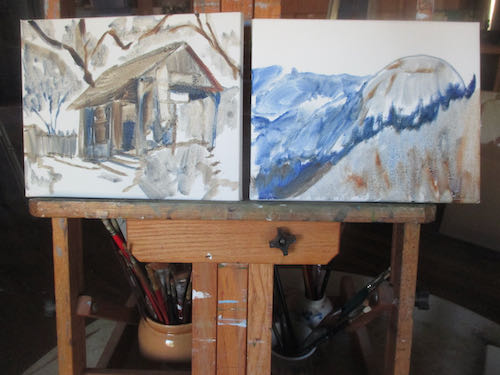
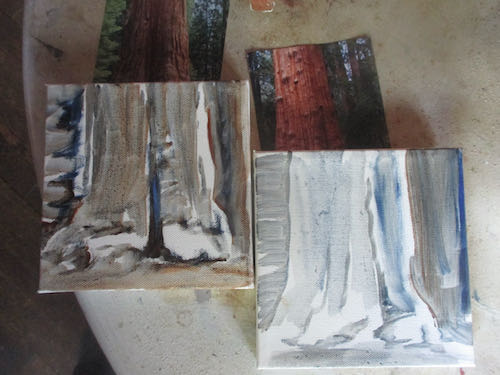
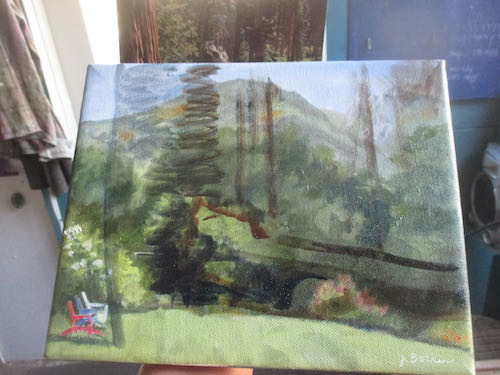
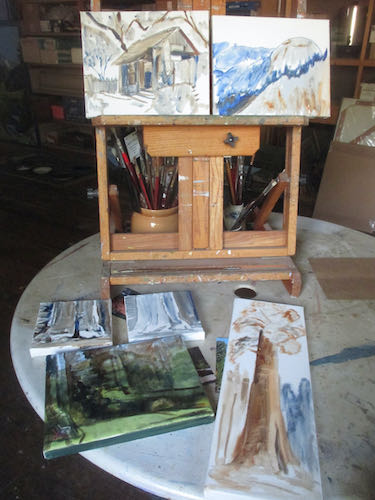

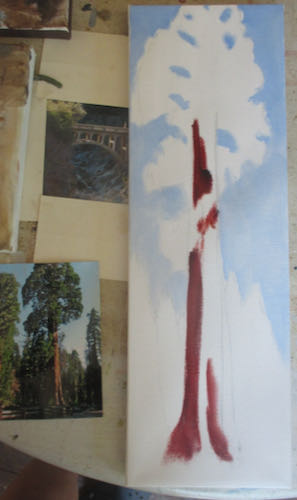
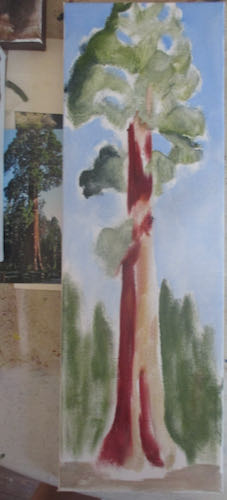
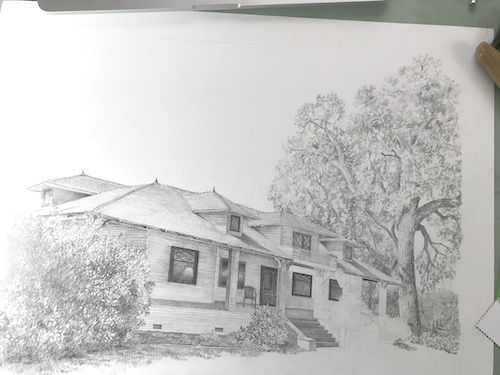
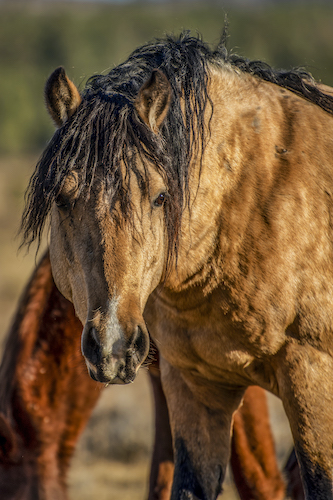 In the ongoing virtual drawing lessons, (actually happening via email rather than Zoom or video) the horse that my student C is drawing has a name, and it isn’t Mr. Curly; the name is Buck. This reminds me of a scene in a Chronicles of Narnia movie (one of the few movies I have seen or actually remember anything) of one of the kids riding a horse. He says to the horse, “Giddy-up, Horsie.” The horse turns his head back a bit and says in a very disgusted and dignified voice, “The name is Phillip.”
In the ongoing virtual drawing lessons, (actually happening via email rather than Zoom or video) the horse that my student C is drawing has a name, and it isn’t Mr. Curly; the name is Buck. This reminds me of a scene in a Chronicles of Narnia movie (one of the few movies I have seen or actually remember anything) of one of the kids riding a horse. He says to the horse, “Giddy-up, Horsie.” The horse turns his head back a bit and says in a very disgusted and dignified voice, “The name is Phillip.”